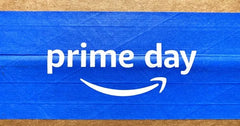
Shopify vs. Lightspeed Commerce: A Comprehensive Analysis of Growth Potential in the Canadian Equity Market
Table of Contents
- Key Highlights:
- Introduction
- Shopify: A Powerhouse in E-commerce Growth
- Lightspeed Commerce: Navigating Financial Challenges
- Comparing Growth Strategies: Shopify vs. Lightspeed
- Economic Factors Influencing the Canadian Equity Market
- FAQ
Key Highlights:
- The Canadian equity markets have rebounded significantly, with the S&P/TSX Composite Index increasing by 21.8% since April.
- Shopify reported a remarkable 22.8% growth in gross merchandise value, while Lightspeed Commerce experienced a 10% increase in revenue but posted a substantial net loss.
- The adoption of omnichannel selling and innovative product development positions Shopify favorably for future growth, while Lightspeed aims to recover from its recent financial setbacks.
Introduction
The resurgence of the Canadian equity markets has captured the attention of investors, driven by improving macroeconomic conditions and easing geopolitical tensions. With the S&P/TSX Composite Index soaring 21.8% from its April lows, the focus has shifted to identifying promising growth stocks. Two companies at the forefront of this conversation are Shopify and Lightspeed Commerce. Both firms operate within the e-commerce and payment solutions sectors, yet their trajectories and financial performances paint contrasting pictures. This article delves into the key metrics and growth prospects of each company, providing insights that can aid investors in making informed decisions.
Shopify: A Powerhouse in E-commerce Growth
Shopify has emerged as a dominant player in the e-commerce landscape, showcasing consistent growth fueled by its robust platform and customer-centric innovations. The company reported impressive first-quarter results, with a gross merchandise value (GMV) increase of 22.8%, reaching $74.8 billion. This marks the seventh consecutive quarter where GMV growth exceeded 20%, underscoring Shopify’s strong market position.
Strong Financial Performance
Shopify's revenue growth of 26.8%, totaling $23.6 billion, is indicative of its expanding user base and the effectiveness of its business model. Notably, revenue from subscription solutions grew by 21.3%, while merchant solutions saw a remarkable increase of 28.9%. This balanced growth across different revenue streams highlights the resilience of Shopify's business strategy.
Despite a contraction in gross margin to 49.5% due to rising cloud and infrastructure costs, the company successfully reduced its operating expenses as a percentage of total revenue from 47% to 41%. This operational efficiency is crucial as Shopify continues to scale its operations while maintaining profitability. The operating income of $203 million represents 9% of total revenue, an improvement from the 5% reported in the same quarter last year. Additionally, a free cash flow margin of 15% indicates strong cash generation capabilities, positioning Shopify favorably for future investments.
Strategic Initiatives and Market Position
Shopify's commitment to innovation is evident in its ongoing development of new products and features designed to enhance the customer experience. The growing adoption of the omnichannel selling model is a key driver of long-term growth potential. By allowing merchants to sell across multiple channels, including online, in-store, and social media, Shopify is well-placed to capture market share in a competitive landscape.
The company’s geographical expansion of payment solutions also supports its financial growth. As Shopify continues to penetrate new markets, the potential for revenue growth increases, further solidifying its position as a leader in e-commerce.
Lightspeed Commerce: Navigating Financial Challenges
Lightspeed Commerce, while also a notable player in the e-commerce space, faced significant hurdles in its latest financial reports. The company’s fourth-quarter performance revealed a 10% growth in topline revenue, driven primarily by a 14% increase in transaction-based revenue and an 8% rise in subscription revenue. However, the company reported a substantial net loss of $575.9 million, largely attributed to a non-cash goodwill impairment charge of $556.4 million.
Revenue Growth vs. Profitability
The contrast between Lightspeed's revenue growth and its net loss raises questions about its operational efficiency and strategic direction. Adjusted for special items, the company posted an adjusted net income of $15 million, a notable 76.5% increase from the previous year's quarter. This adjusted figure indicates that, despite the headline net loss, Lightspeed may be on a path toward profitability if it can manage its expenses more effectively.
Competitive Position and Future Outlook
Lightspeed's growth strategy focuses on enhancing its product offerings and expanding its reach within the retail and hospitality sectors. The company aims to capitalize on the increasing demand for integrated e-commerce solutions that combine point-of-sale systems with online sales capabilities. However, the recent financial setbacks necessitate a reevaluation of its operational strategies to ensure sustainable growth.
Investors will be keen to see how Lightspeed navigates these challenges in the coming quarters and whether it can leverage its technology to improve margins and reduce losses. The competitive landscape is rife with opportunities, but Lightspeed must demonstrate its ability to adapt and thrive in a rapidly evolving market.
Comparing Growth Strategies: Shopify vs. Lightspeed
When evaluating Shopify and Lightspeed, it is essential to consider their growth strategies and market positioning. Shopify’s emphasis on innovation, customer experience, and omnichannel selling sets it apart from Lightspeed, which is still working to stabilize its financial performance.
Innovation and Customer-Centric Solutions
Shopify’s ongoing commitment to developing new features and enhancing its platform is a significant factor contributing to its success. By continuously improving user experience—whether through better payment solutions or enhanced analytics capabilities—Shopify retains its competitive edge. The company’s ability to adapt to changing market conditions and customer needs positions it favorably for long-term growth.
In contrast, Lightspeed’s focus on integrating point-of-sale systems with online solutions is a sound strategy, particularly as businesses seek seamless operations across multiple channels. However, Lightspeed must ensure that its innovations translate into profitable growth rather than operational losses.
Market Dynamics and Consumer Trends
Both companies operate in a dynamic market influenced by shifting consumer preferences and technological advancements. The accelerated adoption of e-commerce during the pandemic has created a lasting impact on retail, with businesses increasingly seeking integrated solutions that enhance operational efficiency.
Shopify's ability to cater to this trend has been evident in its growth metrics. As businesses look to establish a robust online presence, Shopify's platform offers the tools and resources necessary to succeed. Lightspeed, while also addressing these needs, faces the challenge of competing against Shopify's established market dominance.
Economic Factors Influencing the Canadian Equity Market
The rebound of the Canadian equity markets can also be attributed to broader economic factors. The easing of geopolitical tensions, particularly in the Middle East, has fostered a more favorable investment climate. Additionally, improved macroeconomic indicators, such as consumer confidence and spending, have contributed to the positive momentum seen in equity markets.
Interest Rates and Inflation
Interest rates remain a critical factor influencing market dynamics. The Bank of Canada’s monetary policy will play a pivotal role in shaping investment sentiment. As interest rates stabilize, businesses can better forecast their financial performance, which may lead to increased capital expenditures and hiring.
Inflation also factors into the equation, as rising costs can impact consumer spending. However, if businesses can pass on these costs to consumers without sacrificing demand, the overall economic outlook may remain positive.
Investor Sentiment and Market Trends
Investor sentiment has shifted positively, with a renewed appetite for equity investments as the market recovers. This renewed interest is not only limited to established players like Shopify and Lightspeed but also extends to new entrants and startups within the technology and e-commerce sectors.
The Canadian equity market's resilience is a testament to the underlying strength of its economy. As businesses adapt to changing market conditions and consumer preferences, investors will continue to seek opportunities that promise growth and profitability.
FAQ
What are the main differences between Shopify and Lightspeed Commerce?
Shopify focuses on providing a comprehensive e-commerce platform that supports omnichannel selling, while Lightspeed specializes in integrated point-of-sale systems for retail and hospitality sectors. Shopify has demonstrated consistent revenue growth and operational efficiency, whereas Lightspeed is currently facing financial challenges but has shown potential for recovery.
How has the Canadian equity market performed recently?
The Canadian equity markets have rebounded strongly, with the S&P/TSX Composite Index rising by 21.8% since its low point in April. This rebound is attributed to easing geopolitical tensions and improving macroeconomic conditions.
What factors should investors consider when evaluating growth stocks?
Investors should assess growth potential, financial performance, market positioning, and the company’s ability to innovate and adapt to changing consumer preferences. Additionally, understanding broader economic factors, such as interest rates and inflation, is crucial for making informed investment decisions.
What are the growth prospects for Shopify and Lightspeed Commerce?
Shopify’s growth prospects appear strong, driven by innovation, expanding market reach, and a focus on omnichannel selling. Lightspeed Commerce is working to stabilize its financial performance and leverage its integrated solutions to capture market share, but it faces challenges in achieving sustainable profitability.
How can economic factors impact these companies?
Economic factors such as interest rates, inflation, and consumer sentiment can significantly influence the performance of e-commerce companies. These factors affect consumer spending, operational costs, and overall market dynamics, shaping the investment landscape for both Shopify and Lightspeed Commerce.
Potencia tu comercio electrónico con nuestros informes y actualizaciones semanales!
Mantente alineado con lo que está sucediendo en el mundo del comercio
Dirección de correo electrónico
Seleccionado para Ti



12 July 2025 / Blog


